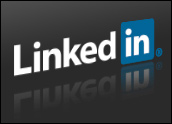
LinkedIn last week lost about $11 billion in market valuation after it provided a 2016 revenue forecast that fell short of analysts’ expectations.
The company’s stock fell by as much as 44 percent Friday afternoon, with shares hitting a three-year-low of $108. The stock was trading slightly lower, around $107, by mid-day Monday.
LinkedIn generated $862 million in revenue in its fourth quarter of 2015, a 34 percent gain year over year, but said it expected to make $820 million for the first quarter of 2016 and between $3.6 billion and $3.65 billion on the year.
Investors and analysts, on average, had forecast $867 million for the first quarter and $3.9 billion for 2016, according to Bloomberg.
Despite Wall Street’s reaction, LinkedIn hasn’t lost faith in itself.
“We have never felt more confident about our long-term strategic road map,” LinkedIn spokesperson May Chow said.
“The investments we are making right now in our member-facing products and business are designed to deliver sustainable, long-term growth,” she told the E-Commerce Times.
LinkedIn’s problems stem from issues that will impact the company long term, said Charles King, principal analyst for Pund-IT.
“The falloff in revenues apparently occurred due to economic problems in overseas markets where LinkedIn has been concentrating growth initiatives,” he told the E-Commerce Times. “Toss in the company’s rich share price (trading at about 50X earnings), and the time is ripe for a sell-off.”
The Fall
The simple answer for LinkedIn’s tanking stock is that the company just isn’t growing as fast as Wall Street had anticipated, but it goes deeper than that, according toItai Leshem, a lawyer with 16 years of experience in securities law.
“First we have to understand that the real reason for the crash — one that no one mentioned — is that the user experience LinkedIn’s members received in 2015 took a step back from its heyday,” he told the E-Commerce Times. “This was due primarily to many counterproductive strategic moves by LinkedIn.”
The result was much less engagement, said Leshem.
“When you don’t supply a platform that produces engagement, you can’t get revenues from it, and I believe that’s the reason for the weak guidance for 2016,” he said. “In 2015, LinkedIn simply squeezed as much juice as possible from a rotten lemon, while it should have worked on providing its members with a fresh and bigger one.”
LinkedIn is facing a quandary: The areas it hopes to grow its user base and revenues are the same regions that have been contracting, King said.
Starting Up Again
“The good news is that LinkedIn currently has no competitors, and so they need to get into startup mode,” Leshem noted.
To increase engagement, LinkedIn needs to start notifying all of a member’s connections of new long-form posts, he said. It should distribute posts to extended audiences, based on how well the content does.
“Its current system of editors deciding what’s interesting for 400 million members and what’s not is suited maybe for North Korea,” Leshem said, “and, in my eyes, is the most decisive factor that led to where it is today.”






















































Social Media
See all Social Media